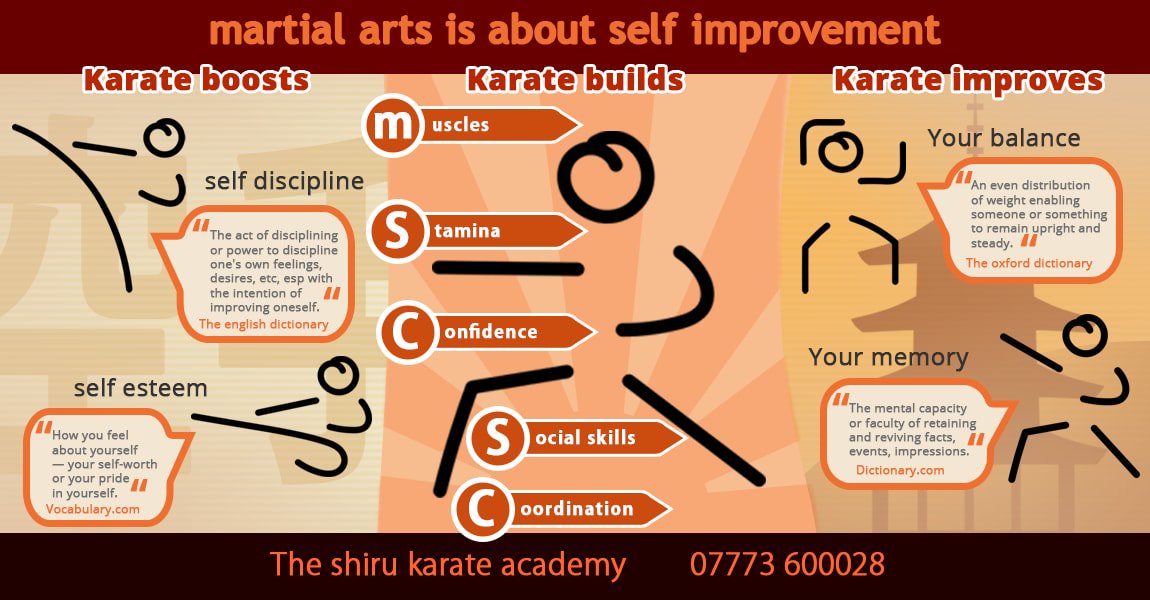The History And Philosophy Of Martial Arts: A Deep Dive
The History And Philosophy Of Martial Arts: A Deep Dive
Blog Article
Writer-Adkins Friedman
Enter the old globe where martial arts were born out of necessity in varied areas. Societies crafted special fighting designs intertwined with historic contexts. Techniques developed over centuries via committed practice and social exchanges. Today, modern martial arts blend traditional components for optimal performance. Philosophically, martial arts emphasize technique, self-improvement, and harmony. Regard, humility, and balance are fundamental concepts guiding professionals in the direction of growth and strength. Explore the depths of this abundant background and viewpoint to reveal the extensive influences shaping this enduring discipline.
Beginnings of Fighting Style
Martial arts came from numerous regions all over the world, developing as practical fight systems to prevent threats. These ancient combating designs were developed out of necessity, with each society crafting strategies suited to their unique environments and difficulties. From the grappling arts of Jujutsu in Japan to the striking methods of Kung Fu in China, martial arts were deeply intertwined with the historic, social, and social fabric of their corresponding cultures.
In https://best-martial-arts-for-bal11109.develop-blog.com/33726637/release-your-adventure-beginning-your-martial-arts-trip-with-a-beginner-friendly-academy , the samurai class refined martial arts like Kenjutsu, the art of the sword, which later on evolved right into the more promoted form of Kendo. Meanwhile, in Brazil, Capoeira emerged as a mix of dancing and fight, created by enslaved Africans as a method to stand up to fascism. Each martial art brings with it an abundant history and viewpoint, mirroring the worths and beliefs of the people that exercised them.
As you delve into the origins of martial arts, you discover a tapestry of human ingenuity, strength, and the unrelenting spirit of warriors throughout time.
Evolution of Methods
Via centuries of technique and refinement, fight techniques within numerous martial arts have actually gone through a profound development. From old styles like Kung Fu and Karate to much more contemporary self-controls such as Brazilian Jiu-Jitsu and Krav Maga, the evolution of strategies has actually been driven by a combination of cultural influences, practical applications, and technical advancements.
One substantial aspect of this advancement is the cross-pollination of strategies in between different martial arts. For example, strategies from typical Japanese Jiu-Jitsu were included right into the creation of Judo by Jigoro Kano in the late 19th century. This blending of designs has resulted in the growth of crossbreed martial arts like Mixed Martial Arts (MMA), which combine elements of striking, grappling, and submission techniques.
In addition, the evolution of techniques has actually been formed by the enhancing focus on performance and efficiency in combat. Specialists have continually looked for to improve their strategies through strenuous training, experimentation, and competition, resulting in the growth of highly specialized and reliable combating designs. In general, the evolution of strategies in martial arts shows the dynamic nature of combat and the continuous mission for enhancement and advancement.
Thoughtful Structures
Discovering the underlying thoughtful concepts of martial arts provides insight into their core values and leading ideas. At the heart of numerous martial arts techniques is the principle of self-control itself. By training where is martial arts most popular and body to function as one natural unit, you cultivate technique that prolongs beyond the dojo or fitness center into everyday life. This self-control includes respect, humility, and self-discipline, forming not simply your physical capabilities however also your character.
Another basic philosophical structure in martial arts is the concept of constant self-improvement. The journey of mastering a fighting style is relentless, with professionals constantly striving to much better themselves, both physically and psychologically. This focus on development cultivates resilience, perseverance, and a growth state of mind that can be applied to all aspects of life.
Furthermore, martial arts emphasize the significance of harmony and equilibrium. Strategies are designed to make use of a challenger's power against them, highlighting the concept of generating and rerouting pressure as opposed to fulfilling it head-on. This approach encompasses social connections, promoting peaceful resolutions and mutual understanding. By accepting these philosophical foundations, martial artists not only improve their battle abilities yet likewise cultivate a way of life centered on personal development, regard, and consistency.
Conclusion
In conclusion, the history and viewpoint of martial arts use an abundant tapestry of practice, self-control, and self-improvement.
Consider instance the story of Bruce Lee, that reinvented martial arts by blending various designs and approaches to develop his very own distinct form of Jeet Kune Do.
With dedication and innovation, martial artists remain to push limits and inspire others to reach their full capacity both in battle and in life.
